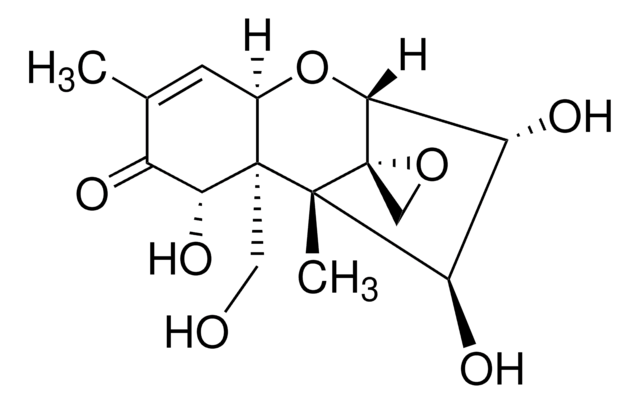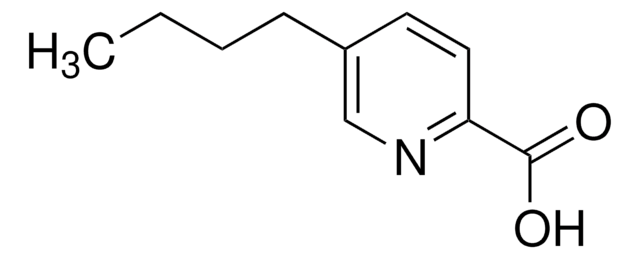IRMM316
Nivalenol in acetonitrile
IRMM®, certified reference material
Synonim(y):
Nivalenol solution, 3α,4β,7α, 15-Tetrahydroxy-12,13-epoxytrichothec-9-en-8-one, NIV
About This Item
Polecane produkty
klasa czystości
certified reference material
agency
IRMM®
producent / nazwa handlowa
JRC
Zastosowanie
general analytical
format
matrix material
ciąg SMILES
[H][C@]12O[C@]3([H])[C@H](O)[C@@H](O)[C@@](C)([C@]34CO4)[C@@]1(CO)[C@H](O)C(=O)C(C)=C2
InChI
1S/C15H20O7/c1-6-3-7-14(4-16,11(20)8(6)17)13(2)10(19)9(18)12(22-7)15(13)5-21-15/h3,7,9-12,16,18-20H,4-5H2,1-2H3/t7-,9-,10-,11-,12-,13-,14-,15+/m1/s1
Klucz InChI
UKOTXHQERFPCBU-XBXCNEFVSA-N
Szukasz podobnych produktów? Odwiedź Przewodnik dotyczący porównywania produktów
Komentarz do analizy
IRMM316
Informacje prawne
Hasło ostrzegawcze
Danger
Zwroty wskazujące rodzaj zagrożenia
Zwroty wskazujące środki ostrożności
Klasyfikacja zagrożeń
Acute Tox. 4 Dermal - Acute Tox. 4 Inhalation - Acute Tox. 4 Oral - Eye Irrit. 2 - Flam. Liq. 2
Kod klasy składowania
3 - Flammable liquids
Klasa zagrożenia wodnego (WGK)
WGK 2
Temperatura zapłonu (°F)
35.6 °F - closed cup
Temperatura zapłonu (°C)
2.0 °C - closed cup
Wybierz jedną z najnowszych wersji:
Certyfikaty analizy (CoA)
Przepraszamy, ale COA dla tego produktu nie jest aktualnie dostępny online.
Proszę o kontakt, jeśli potrzebna jest pomoc Obsługa Klienta
Masz już ten produkt?
Dokumenty związane z niedawno zakupionymi produktami zostały zamieszczone w Bibliotece dokumentów.
Nasz zespół naukowców ma doświadczenie we wszystkich obszarach badań, w tym w naukach przyrodniczych, materiałoznawstwie, syntezie chemicznej, chromatografii, analityce i wielu innych dziedzinach.
Skontaktuj się z zespołem ds. pomocy technicznej







